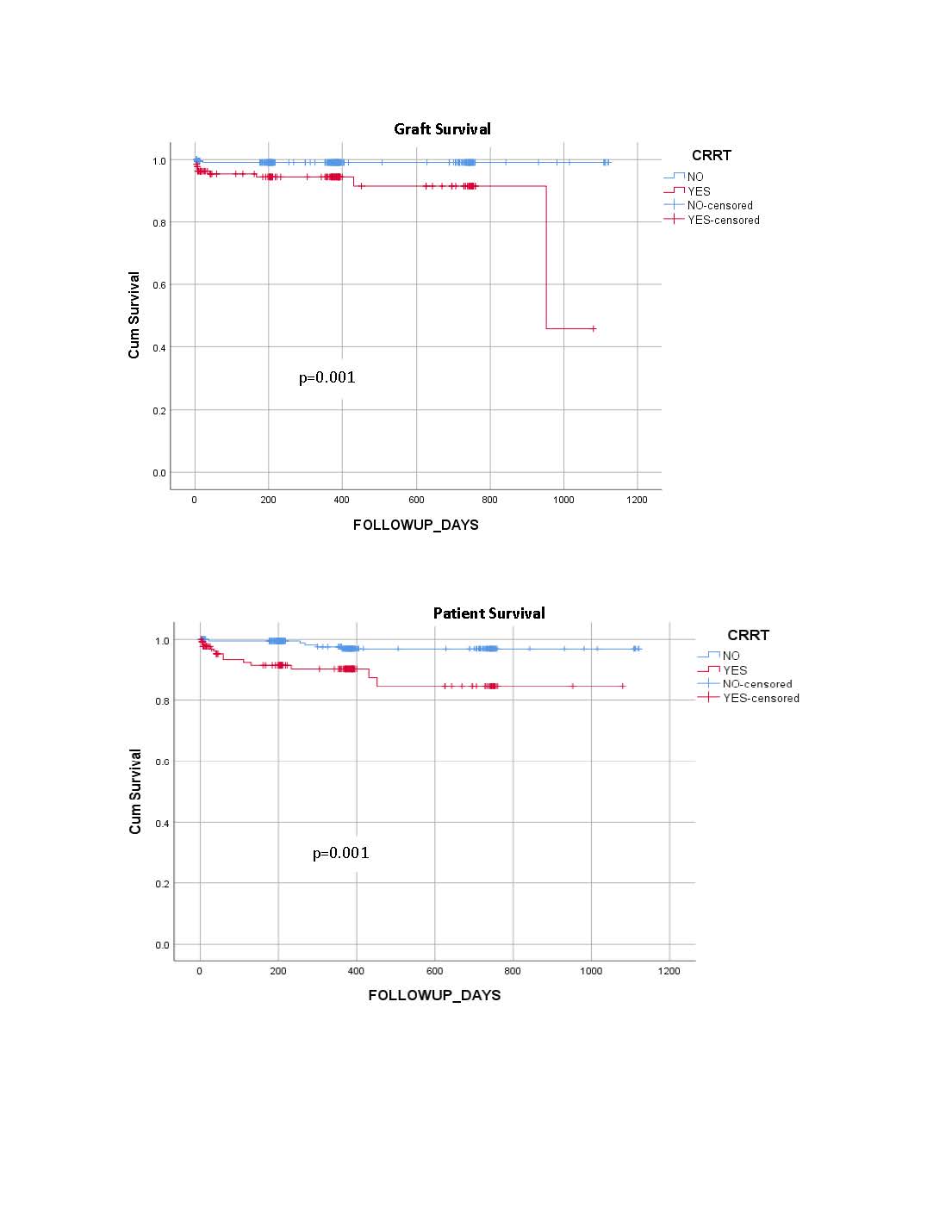Renal Function After Orthotopic Liver Transplantation
1Transplant Hepatology, Tampa General Hospital, Tampa, FL, 2Lake Erie College of Osteopathic Medicine, Bradenton, FL, 3Western University of Osteopathic Medicine, Pomona, CA, 4University of Tampa, Tampa, FL, 5University of South Florida, Tampa, FL, 6Morsani College of Medicine, University of South Florida, Tampa, FL, 7Transplant Surgery, Tampa General Hospital, Tampa, FL
Meeting: 2022 American Transplant Congress
Abstract number: 1078
Keywords: Liver transplantation, Renal failure, Renal function
Topic: Clinical Science » Liver » 52 - Liver: Kidney Issues in Liver Transplantation
Session Information
Session Name: Liver: Kidney Issues in Liver Transplantation
Session Type: Poster Abstract
Date: Sunday, June 5, 2022
Session Time: 7:00pm-8:00pm
 Presentation Time: 7:00pm-8:00pm
Presentation Time: 7:00pm-8:00pm
Location: Hynes Halls C & D
*Purpose: Patients with end-stage liver disease are susceptible to renal dysfunction especially during liver transplantation (LTX). Continuous renal replacement therapy (CRRT) can be used to adjust the acid-base balance, electrolyte management, and intravascular volume during LTX. There are no standardized protocols for the implementation of renal replacement therapy in liver transplant patients. The purpose of this study was to evaluate the outcomes of renal function in liver transplant recipients with and without the use of CRRT.
*Methods: We conducted a retrospective cohort study of consecutive liver transplants from 2018 to 2020 at a single center using patient electronic medical records.
*Results: There were 371 patients who underwent deceased donor liver transplantation, 136 patients (37%) with CRRT, and 235 (63%) without CRRT. The two groups (liver transplantation with CRRT vs. without CRRT) were similar with regards to age in years (54 vs. 56, p=.077), male gender (66% vs. 64%, p=0.842), race (83% White vs. 84% White, p=0.741), and BMI (36.5 vs. 32.5, p=0.5). Patients with CRRT had a higher calculated MELD at transplant (33 vs. 24, p<0.001), longer OR time in minutes (377 vs. 320, p<0.001), more blood loss in mL (5462 vs. 2598, p<0.001), more intubation days (2.5 vs. 1.6, p<0.001), more ICU days (31 vs 13, p<0.001), a longer length of stay days (22 vs 10, p<0.001) and more consults (6 vs 3, p<0.001) compared with patients without CRRT. The creatinine was higher in patients with CRRT pre-LTX (2 vs. 1.2, p<0.001), 1-week post-LTX (1.8 vs. 1, p<0.001) and 30-days post-LTX (1.8 vs. 1.2, p<0.001). There were 42 referrals for kidney transplant evaluation excluding patients who received simultaneous liver and kidney transplants (36 with CRRT and 6 without CRRT, p<0.001). The graft survival was 166 days less (p<0.001) and the patient survival was 150 days fewer (p<0.001) in patients with CRRT.
*Conclusions: Continuous renal replacement has a role in the management of renal dysfunction in liver transplant patients. More research is indicated to determine standardized protocols that identify the optimal patient selection criteria to maximize renal function and outcomes with CRRT in liver transplant patients.
To cite this abstract in AMA style:
Kemmer N, Alam z, Desai S, Grater L, Robichaux K, Mohammed S, Gosselin M, Kumar A, Buggs J. Renal Function After Orthotopic Liver Transplantation [abstract]. Am J Transplant. 2022; 22 (suppl 3). https://atcmeetingabstracts.com/abstract/renal-function-after-orthotopic-liver-transplantation/. Accessed November 28, 2025.« Back to 2022 American Transplant Congress

